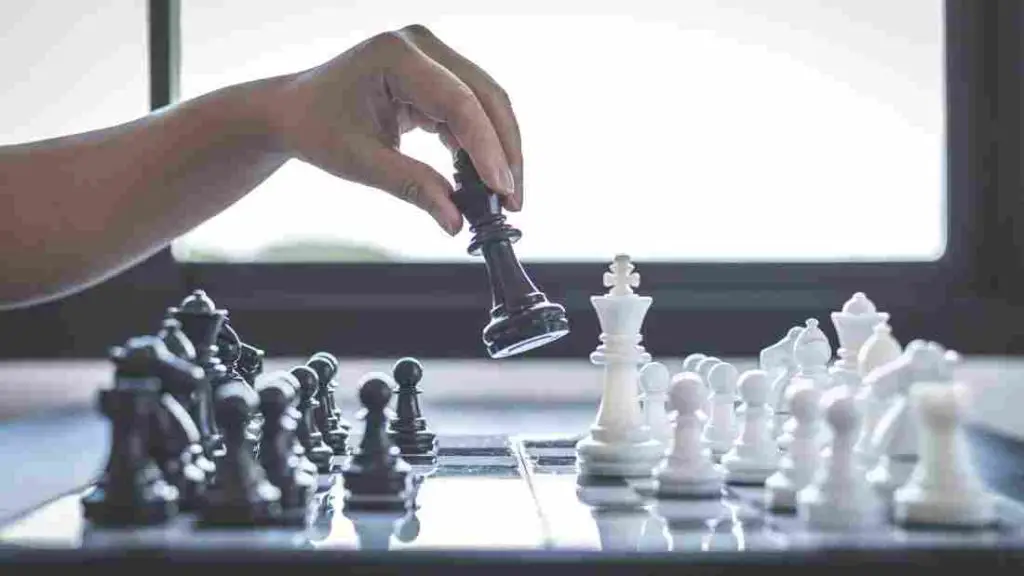Game theory is a fascinating field that helps us understand how people behave in strategic situations. It’s particularly useful in understanding decision-making in competitive environments, where individuals or groups must take into account the actions of others when making choices.
This can be applied to everything from business negotiations to international politics, and even personal relationships. By using game theory models, we can gain insights into human behavior and predict outcomes based on different scenarios.
In this blog post, we’ll give you a brief introduction to game theory and its applications in anthropology.
The Basics of Game Theory
Game theory is the study of strategic decision-making. It allows us to analyse how individuals make decisions in situations where the outcomes depend on the actions of others. The theory was first developed in the early 1900s by economists and mathematicians who were interested in understanding how people make decisions. Since then, it has been used in a wide range of fields, including psychology, biology, and political science.
Game theory is a mathematical approach to understanding how people make decisions in competitive situations. It’s based on the idea that each decision maker, or “player,” is motivated by self-interest and seeks to maximize their own payoff.
Here are some key terms you should know when studying game theory:
Players: These are the individuals or groups who are involved in a game. They may have different goals and motivations.
Strategies: A strategy is a plan of action that a player can take in a game. Each strategy will have associated payoffs depending on what the other players do.
Payoffs: The payoff is the outcome or reward that each player receives from their chosen strategy. In most cases, payoffs are represented numerically.
We use game theory to predict what actions players will take in different games. To do this, we need to make some assumptions about how players behave. The most common assumption is that players are “rational” – that is, they want to maximize their own payoff (or utility) given their beliefs about the other players’ actions.
Games can be represented using either matrices or trees. Matrices are used for games with a small number of players and strategies, while trees are used for more complex games.
In a matrix representation, each row represents one player’s strategies and each column represents another player’s strategies. The intersection of these rows and columns shows the resulting payoffs for each combination of strategies.
In a tree representation, each node represents a decision point where one or more players must choose between different options. The branches leading out from each node represent the possible outcomes of these choices, along with their associated payoffs.
Understanding how games are represented using matrices or trees is essential to analysing different scenarios and predicting outcomes in game theory.
Classic Examples of Game Theory in Action
Classic game theory examples help to illustrate key concepts and principles of the field. Here are some of the most well-known examples:
The Prisoner’s Dilemma
This is a classic example of a game where individual self-interest can lead to suboptimal outcomes for everyone involved. In this game, two suspects are arrested and placed in separate cells. They have both been accused of committing a crime together, but the police don’t have enough evidence to convict either one without a confession.

Each suspect is given the option to confess or remain silent. If both remain silent, they will each receive a light sentence. However, if one confesses and implicates the other, the confessor will receive no sentence at all while the other suspect will receive a harsh penalty. If both confess, they will each receive moderate sentences.
The dilemma arises when each player considers what their opponent might do. From an individual perspective, it is always better to defect (i.e., confess) because it offers the best possible outcome regardless of what the other player does. If one player defects and implicates their partner while their partner remains silent, then the defector goes free while their partner receives a harsh punishment.
However, if both players defect, then they both end up with moderate sentences which are worse than if they had cooperated by remaining silent.
This illustrates how self-interest can lead to “defection” even though cooperation (i.e., remaining silent) would produce better outcomes for everyone involved. The dilemma arises because neither player can trust that their partner will cooperate and so they must make decisions solely based on self-interest.
In summary, The Prisoner’s Dilemma shows how rational decision-making based on self-interest can sometimes lead to suboptimal outcomes for everyone involved due to lack of trust and communication between players.
Nash Equilibrium
This concept refers to a situation where no player has an incentive to change their strategy based on what others are doing. In other words, each player’s strategy is optimal given what they believe about their opponents’ strategies.
An example of Nash Equilibrium is the Battle of the Sexes game, in which a couple must decide whether to go out on a date to see an opera or watch a football match. Both prefer spending time together over being alone, but they have different preferences for which activity they do together. If they both choose differently, it leads to conflict.
Suppose that the woman prefers going to the opera while the man prefers watching football. If both choose differently, it leads to conflict and neither person enjoys their time together. However, if both choose the same activity, then they both enjoy themselves even though one person may not be doing their preferred activity.
There are two possible equilibria in this game: one where both go to the opera and another where both go to the football match. If one person were to deviate from this equilibrium by choosing the opposite activity, then it would lead to conflict and neither person would enjoy themselves.
This example demonstrates how Nash equilibrium can arise in situations where players have conflicting preferences but still value cooperation with each other. By coordinating their actions and choosing an outcome that benefits them both equally, players can achieve mutual gains without resorting to conflict or competition.
Chicken
This game involves two drivers heading towards each other on a collision course in cars. Whoever swerves first loses face and therefore loses respect from their peers (or possibly worse). This game demonstrates that sometimes rational players may make choices that result in mutually disastrous outcomes due to fear of losing status or reputation.
Stag Hunt
In this game, two hunters must decide whether to hunt stag or hare together or separately. Hunting stag requires cooperation while hunting hare does not necessarily require cooperation from partner hunter.
Ultimatum: One player makes an offer on how to divide up resources between themselves and another player who must accept or reject it outright with no changes allowed; if rejected then neither player gets anything at all.
These classic games demonstrate how decisions made by individuals within groups can affect overall outcomes and highlight important aspects of human behaviour such as trust, cooperation and competition in decision making processes.
Types of Games
Game theory is based on the assumption that people are rational decision-makers who weigh the costs and benefits of their actions before taking them. This may not always be true in reality, but it makes for a useful simplification when studying human behaviour.
Cooperative vs Non-Cooperative
Cooperative games are those in which players can form coalitions and make binding agreements to achieve mutually beneficial outcomes. These types of games often involve situations where players have a shared goal or interest, such as in a business partnership or a team sport. In cooperative games, the focus is on how players can work together to maximize their joint payoff.
Non-cooperative games, on the other hand, are those in which players act independently and cannot form binding agreements with each other. These types of games often involve situations where players have conflicting interests, such as in a competitive market or a military conflict. In non-cooperative games, the focus is on how each player can strategically choose their actions to maximize their own payoff given what they believe about other players’ behaviour.
Examples of Non-Cooperative and Cooperative Games
One classic example of a non-cooperative game is the Prisoner’s Dilemma, which is outlined above. Each prisoner is given the choice to either confess or remain silent. If both prisoners remain silent, they both receive a light sentence. However, if one prisoner confesses while the other remains silent, the confessor goes free while the silent prisoner receives a heavy sentence. If both prisoners confess, they both receive moderate sentences.
In this game, both prisoners would be better off if they could cooperate and remain silent. However, since they cannot communicate or make binding agreements with each other, each prisoner has an incentive to defect and confess regardless of what the other does.
An example of a cooperative game is the Nash bargaining problem, where two parties must divide a fixed amount of resources between them. In this game, each party proposes a division of resources and then negotiates until they reach an agreement that is acceptable to both parties. The final agreement will depend on how much bargaining power each party has and how willing they are to compromise.
In summary, cooperative games involve situations where players can work together to achieve mutually beneficial outcomes through cooperation and coordination. Non-cooperative games involve situations where players must choose their actions strategically based on what they believe about other players’ behaviour in order to maximize their own payoff.
Zero-Sum vs Non-Zero Sum Games
In game theory, games can also be classified into two broad categories: zero-sum and non-zero sum games.
Zero-sum games are those in which the total payoff for all players is constant, meaning that any gain by one player must come at the expense of another player’s loss. In other words, the gains and losses of each player exactly offset each other, resulting in a total payoff of zero. Examples of zero-sum games include most competitive sports and many economic situations such as a price war between two companies.
Non-zero sum games are those in which the total payoff for all players can vary, meaning that it is possible for all players to gain or lose together. These types of games often involve situations where there are shared interests or potential for cooperation among players. Examples of non-zero sum games include many cooperative board games like Pandemic or Settlers of Catan, as well as negotiation scenarios where both parties can benefit from reaching an agreement.
In zero-sum games, the optimal strategy for each player is typically to maximize their own payoff while minimizing their opponent’s payoff. This leads to a situation where players are constantly trying to outdo each other in order to gain an advantage. In contrast, non-zero sum games often require players to work together and coordinate their actions in order to achieve a common goal.
Examples of Zero-Sum vs Non-Zero Sum Games
One classic example of a zero-sum game is chess. In chess, there are two players who start with equal resources (pieces) and compete against each other until one player wins by putting the other’s king into checkmate. Since there is only one winner in chess, any gain by one player must come at the expense of their opponent’s loss.

On the other hand, an example of a non-zero sum game would be a group project where everyone receives the same grade based on overall performance. In this case, all members have a shared interest in working together to achieve the best possible outcome for everyone involved.
In summary, zero-sum games involve situations where any gain by one player must come at the expense of another player’s loss. Non-zero sum games involve situations where there is potential for cooperation and mutual benefit among players.
Applications of game theory
Game theory is a powerful tool that can be used to model and analyse a wide range of interactions, from economic transactions to political negotiations and social phenomena. In this article, we will explore some of the key applications of game theory in these different domains.
Economic Interactions
One of the most common applications of game theory is in modelling economic interactions such as auctions and pricing strategies. In an auction, multiple bidders compete for a single item by placing bids until the highest bidder wins. Game theory can help us understand how bidders should behave strategically given their beliefs about other bidders’ valuations and bidding behavior. This can help auctioneers design more efficient and profitable auctions.
Similarly, game theory can be used to model pricing strategies in oligopolistic markets where firms have market power but must also consider the responses of their competitors. By analyzing the strategic interactions between firms, we can better understand how prices are set and how market outcomes are affected by changes in demand or supply.
Politics and Negotiation
Game theory can also be applied to political situations such as arms races and international negotiations. In an arms race, two or more countries may engage in a competition to build up their military capabilities in order to deter aggression from other countries. Game theory can help us understand how this competition might escalate or de-escalate depending on each country’s strategic calculations.
In international negotiations, game theory can help us understand how countries might bargain over issues like trade agreements or disarmament treaties. By modeling these negotiations as strategic games with multiple possible outcomes, we can better understand why certain agreements are reached while others fail.
Social Phenomena
Finally, game theory can be used to understand social phenomena like cooperation, trust, and conflict resolution. For example, the famous Prisoner’s Dilemma game illustrates how self-interest can lead to suboptimal outcomes when players cannot communicate or trust each other. By studying these types of games and experiments, we gain insights into human behavior and decision-making that have important implications for real-world situations like business partnerships or international conflicts.
In conclusion, game theory has numerous applications across different domains including economics, politics, and social science. By providing a framework for analyzing strategic interactions between individuals or groups, it helps us better understand complex phenomena and make more informed decisions in a variety of contexts.
Criticisms of Game Theory
Game theory is a powerful tool for analysing decision-making and strategic behavior in a wide range of contexts, from economics to political science. However, there are also some common criticisms of game theory that are important to consider.
One criticism of game theory is that it relies on certain assumptions about human behavior that may not always be accurate or realistic. For example, many game-theoretic models assume that players are perfectly rational and always act in their own self-interest. In reality, people often make decisions based on emotions, social norms, and other factors that may not align with pure rationality.
Another criticism of game theory is that it can be limited in its ability to account for real-world complexity. Game-theoretic models often simplify complex situations into abstract games with clear rules and outcomes. While this can be useful for analysing the basic dynamics of a situation, it may miss important nuances and variables that are crucial to understanding real-world behaviour.
Additionally, some critics argue that game theory can be overly focused on competition and conflict at the expense of cooperation and mutual benefit. While many real-world situations involve elements of both competition and cooperation, game-theoretic models often emphasize the former over the latter.
Despite these criticisms, game theory remains an important tool for understanding strategic decision-making in a variety of fields. By acknowledging its limitations and taking care to apply it appropriately in different contexts, researchers can continue to use game theory as a valuable framework for analysis and insight.
Conclusion
In conclusion, game theory has proven to be a valuable tool for understanding decision-making and strategic behavior in a variety of contexts. From economics to political science, game theory has helped researchers gain insight into the dynamics of competitive and cooperative interactions between individuals and groups.
Interestingly, game theory also has important connections to anthropology. Anthropologists have long been interested in studying the social and cultural factors that shape human behaviour, and game theory provides a framework for analysing these factors in a systematic way. By using game-theoretic models to study traditional practices like gift-giving or resource sharing, anthropologists can gain new insights into the underlying motivations and strategies that drive human social interactions.
Overall, game theory represents an exciting intersection between math, psychology, sociology, and anthropology. As researchers continue to refine their understanding of this complex field, we can expect even more breakthroughs in our understanding of human behaviour and decision-making.
Anthropology Glossary Terms starting with G
Disclosure: Please note that some of the links in this post are affiliate links. When you use one of my affiliate links, the company compensates me. At no additional cost to you, I’ll earn a commission, which helps me run this blog and keep my in-depth content free of charge for all my readers.


